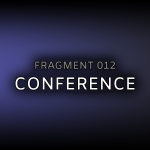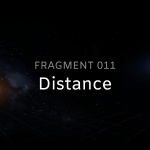January, 2024
now browsing by month
Conference

The concept of what constitutes game content has evolved significantly over the years. Special editions of games often include physical items – art books, figurines, or maps – that extend the gaming experience beyond the screen. These editions suggest that content is not confined to digital interactions but encompasses a broader ecosystem of tangible and intangible elements that enrich the player’s experience. “Conference” builds upon this idea, pushing the envelope further by integrating real-world interaction directly into the gameplay.
In recent years, the impact of cosmetic content in games has become increasingly prominent. As explored in various studies, including those archived at the National Center for Biotechnology Information, cosmetic items, though not affecting gameplay mechanics, significantly influence player engagement and satisfaction. They offer a form of self-expression within the game, allowing players to personalize their experience and create a deeper connection with the game world. Conference echoes this concept of personalization, though in a non-visual form, by engaging players in a personalized conversation, adding a layer of individualized experience to the game.
The essence of Conference also touches upon the importance of human interaction in games, a theme prevalent in multiplayer and social gaming. As detailed in studies and articles such as those from the University of Wisconsin-Milwaukee and Builtin, social interactions in online gaming create communities, foster relationships, and provide significant psychological benefits. The fragment Conference leverages this aspect by transforming a simple phone call into a platform for interaction, reminiscent of the communal experiences found in multiplayer games.
Conference aims to be a commentary on the evolving nature of game content. It challenges players to think beyond the screen and consider the diverse elements that constitute a gaming experience in the digital age. By integrating a real-world interaction into its fabric, the fragment highlights the potential for games to encompass a wide range of experiences – from the tangible collectibles of special editions to the intangible connections formed in online communities.
Distance

In the world of video game design, the concept of distance plays a crucial role in shaping player experience. This fragment offers a unique opportunity to reflect on how distance, scale, and the sense of isolation are represented and perceived in games.
For a moment let’s talk about Fast travel. On one hand, it’s a convenient tool that respects the player’s time, especially in games with vast worlds like “Skyrim” or “The Witcher 3.” On the other hand, as highlighted in discussions on platforms like This great article by Brendan Calwell, fast travel can diminish the perceived scale and majesty of a game world. It can make a sprawling landscape feel compressed, turning a potentially epic journey into a series of instant transitions. This convenience, while practical, sometimes robs players of the immersive experience of traversing great distances and discovering the unexpected wonders along the way.
Space games, in particular, face the challenge of representing the unimaginable vastness of the cosmos. While some titles, like EVE Online, opt for a more condensed or stylized approach to make gameplay enjoyable, others like Starfield strive for realism, attempting to capture the sheer scale of space. However, truly representing the astronomical distances in a way that is both accurate and engaging for players is a significant challenge. Games often have to find a balance between realism and playability, as an entirely realistic portrayal of space travel might involve long periods of emptiness and inaction, which can test player engagement—and even lead to unintended feelings of isolation.
This sense of isolation is important to consider in regards to distance in games. In games that emphasize the scale of their world, such as No Man’s Sky or Elite Dangerous, isolation can become a powerful narrative and emotional tool. It can create a sense of awe at the grandeur of the universe, but it can also evoke feelings of insignificance and solitude. This isolation can lead to moments of introspection and self-reflection, allowing players to experience a deep connection with the game world that is both humbling and enriching.
The journey through the solar system in this fragment is not just a traversal of space, but a meditation on distance and scale in game design. It challenges the conventions of fast travel and condensed spaces, inviting players to experience the true vastness of our solar neighborhood. This fragment stands as a reminder that sometimes, the journey itself is as important as the destination, and that the perception of distance and scale can profoundly shape our gaming experience.
In embracing the vastness, both in space and conceptually, this fragment and games like it ask us to consider our relationship with distance and isolation. They encourage us to ponder the impact of these elements on our perception of the game world and our place within it. As game design continues to evolve, the exploration of these themes will undoubtedly lead to new innovations and experiences, expanding the boundaries of how we interact with and understand virtual spaces.
Sprint

In the realm of video games, speedrunning represents a fascinating and unique subculture, a form of play that extends beyond the intended boundaries of gameplay. The accompanying fragment, designed with speedrunners in mind, serves as a testament to the intricate artistry and competitive spirit of this community. It invites players to not just play the game but to master and redefine it.
Speedrunning, at its core, is a playstyle that challenges participants to dissect a game’s mechanics, to exploit its weaknesses, and to push the limits of what is possible within its digital confines. Speedrunners engage in a deep, almost symbiotic relationship with the games they run, often knowing every pixel and frame with an intimacy that surpasses even the developers’ understanding.
This essay by Jacob Bruett on video game speedrunning as a unique form of play emphasizes the creative and exploratory nature of this practice. Speedrunners are not just players; they are innovators and problem-solvers. They deconstruct the game to its fundamental components, seeking routes and strategies that shave off seconds or exploit glitches, transforming the game into a playground of possibilities.
Speedrunning is not monolithic; it is multifaceted, with various categories and challenges that appeal to different kinds of players. One such challenge is the ‘low%’ run, where players attempt to finish the game by collecting as few items as possible. This type of run often requires an entirely different approach to the game, emphasizing skill and precision over power-ups or upgrades. It’s a testament to the player’s raw ability and understanding of the game’s mechanics.
These unique challenges highlight the resourcefulness of speedrunners. As discussed in speedrun forums and analyses, such as those found on Speedrun.com and in this exploration of speedrun studies by Medium’s David Howard, these challenges are a form of metagame. They extend the game’s life and appeal, creating new experiences and narratives that are often as engaging as the original game itself.
Looking ahead, the future of speedrunning is as dynamic as the practice itself. With the advancement of gaming technology, including the potential of mind-controlled games, speedrunning will continue to evolve. New games will bring new challenges, and speedrunners will undoubtedly rise to meet them, finding innovative ways to break records and redefine the parameters of play.
The fragment presented here, designed with speedrunning in mind, is a tribute to this relentless pursuit of excellence. It offers a playground for speedrunners to test their skills, to compete, and to contribute to the rich tapestry of gaming culture. It’s a celebration of the speedrunning spirit – a spirit of determination, creativity, and an unyielding desire to push beyond the limits.
